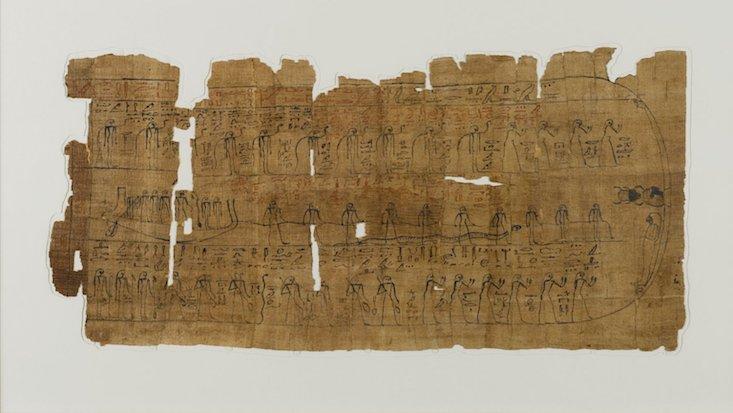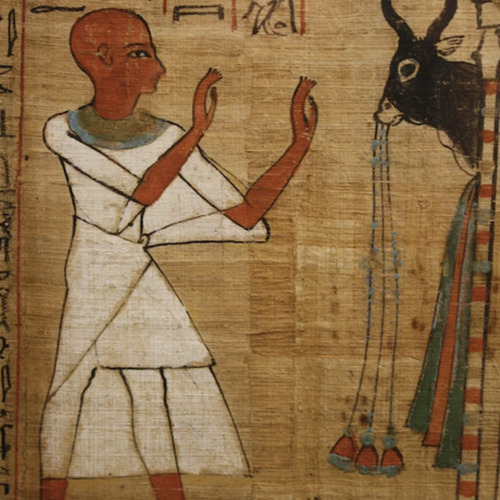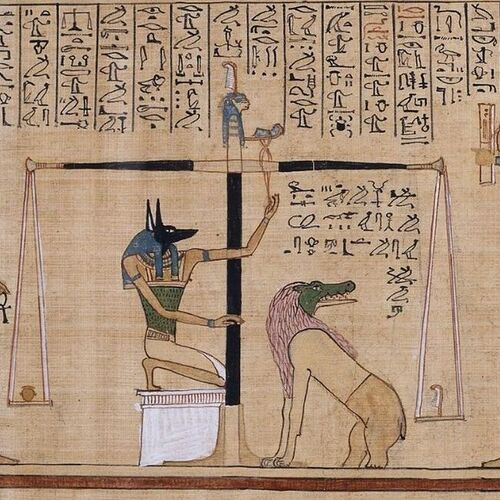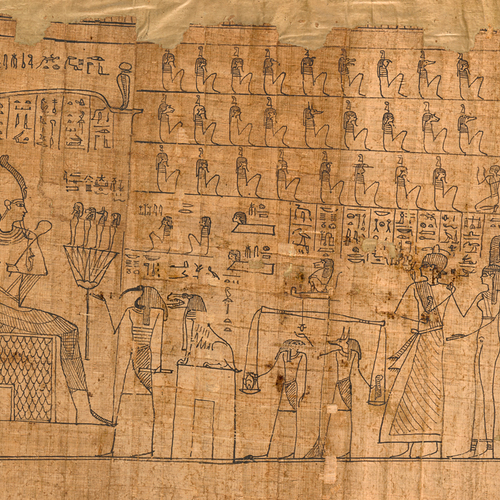The Book of Coming Forth by Day (Book of the Dead)
The Book of Coming Forth by Day, commonly known as the Book of the Dead, is a collection of ancient Egyptian funerary texts. These texts consist of spells, prayers, and incantations designed to guide the deceased through the afterlife (Britannica 1). While the term "book" typically means a text authored by one person and consistently reproduced in identical copies, these particular texts involve numerous contributors, and each copy is different (Warren 1).
Origins and Development
Originating during the New Kingdom period (circa 1550-1070 BCE), the Book of the Dead evolved from earlier funerary texts such as the Pyramid Texts and the Coffin Texts. Initially exclusive to royalty and the elite, it later became more widely accessible, reflecting a democratization of access to the afterlife (Warren 1). These texts were intended to protect and aid the dead in their journey to the afterlife, ensuring they could successfully navigate the trials and obstacles they would encounter.
The spells of the Book of the Dead were first inscribed on tomb walls and coffins but were later written on papyrus scrolls. By the 12th Dynasty (circa 1991-1802 BCE), these texts were systematically organized into chapters and written on papyrus, making them more portable and widely distributed (Mark 3).
Function and Contents
The primary function of the Book of the Dead was to provide guidance and protection to the deceased in their journey through the underworld. Central to its contents were spells and rituals aimed at overcoming obstacles and dangers encountered in the afterlife. For example, Spell 125 details the judgment of the soul by Osiris, emphasizing the importance of moral conduct and the weight of the heart in determining the soul's fate (Mark 2).
Artistic and Cultural Significance
The Book of the Dead is significant not only for its religious and cultural insights but also for its rich artistic value. The texts were usually accompanied by elaborate illustrations (vignettes) that depict various scenes from the afterlife, gods, and the deceased's journey. These vignettes not only enriched the textual content but also provided visual aids to aid in the understanding and application of the spells (Warren 1).
Writing Techniques and Production (Premodern)
In the premodern period, particularly in ancient Egypt, writing was an intricate and highly skilled craft. The Book of the Dead was typically written on papyrus, a paper-like material made from the pith of the papyrus plant. Hieroglyphs, the writing system used for the Book of the Dead, were meticulously inscribed by scribes. These scribes were highly trained and held significant status within society. They used reed brushes or pens dipped in ink made from soot or other natural pigments mixed with water. The creation of a Book of the Dead manuscript was a labor-intensive process. Scribes, highly skilled in hieroglyphic writing, inscribed the texts on papyrus using ink made from natural pigments. The scrolls were then adorned with colorful illustrations that were often customized for the individual for whom the book was made, reflecting their specific needs and beliefs about the afterlife (Warren 2).
Dissemination and Social Context
The dissemination of the Book of the Dead was closely tied to Egyptian religious beliefs and social hierarchy. Copies were primarily commissioned by wealthy individuals, including pharaohs and nobles, due to the high cost of production. These manuscripts were buried with the deceased to ensure they had the necessary guidance and protection in the afterlife (Mark 1).





